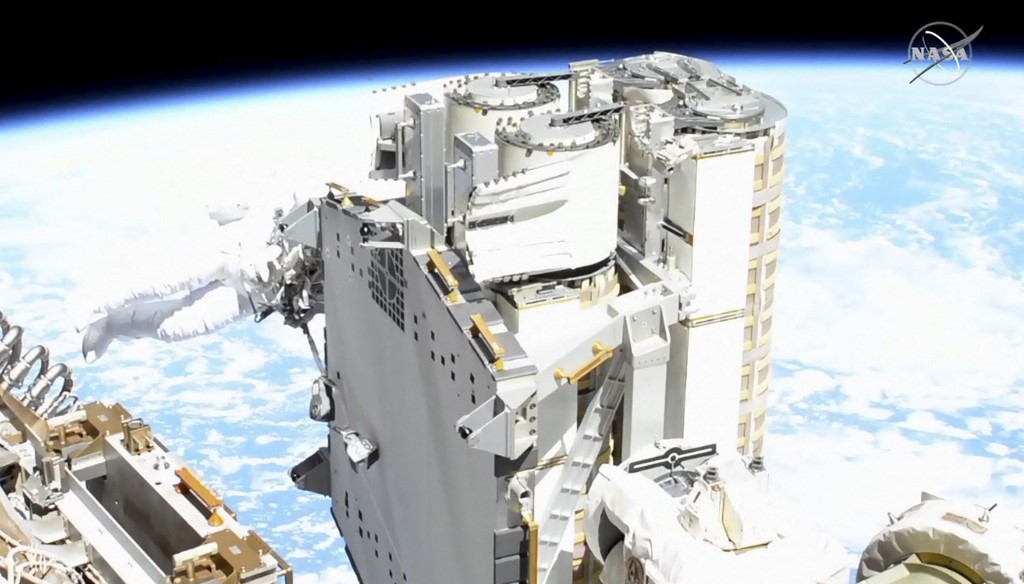
WASHINGTON, United States (AFP) — Astronauts Thomas Pesquet of France and Shane Kimbrough of the United States spacewalked outside the International Space Station on Wednesday as they began the painstaking process of installing new solar panels to boost the orbital outpost’s deteriorating power systems.
It was the first of several excursions to augment the ISS’s existing eight solar arrays, with the first pair operating continuously since December 2000.
The spacewalking duo were installing the first of six new rollout panels — but problems with display and controls on Kimbrough’s spacesuit forced him to return to the station to reset his systems.
The time lost meant they were only able to maneuver the panel into position, but unable to install the cabling and bolts needed to complete the process during Wednesday’s spacewalk of seven hours and 15 minutes.
They might pick up the work Sunday, but the final plan is being worked out.
The spacewalks “are going to be very challenging, very complex, so we’ve got to make sure that we’re both on the same page for every movement that we do,” Kimbrough said ahead of leaving the airlock Wednesday morning.
Part of the installation procedure has to be carried out while the ISS is in the Earth’s shadow, when the station is operating on battery power.
The combination of the original arrays and six newer and smaller arrays that are more efficient will boost power by 20 to 30 percent.
“Together in combination they generate more power than what our original array when it was new did on its own,” Dana Weigel, deputy manager of the International Space Station program said.
When the mission is complete, the ISS will be back to operating at 215 kilowatts. For comparison, a desktop computer and monitor runs at around 270 watts, and a small refrigerator uses about 725 watts.
The new arrays can be rolled out like yoga mats and are smaller and lighter than traditional solar panels.
NASA hopes to move forward with the technology for the Artemis mission to return to the Moon, and similar panels will likely be used on a future lunar station called Gateway.
It was Pesquet’s third spacewalk and Kimbrough’s seventh.
© Agence France-Presse





